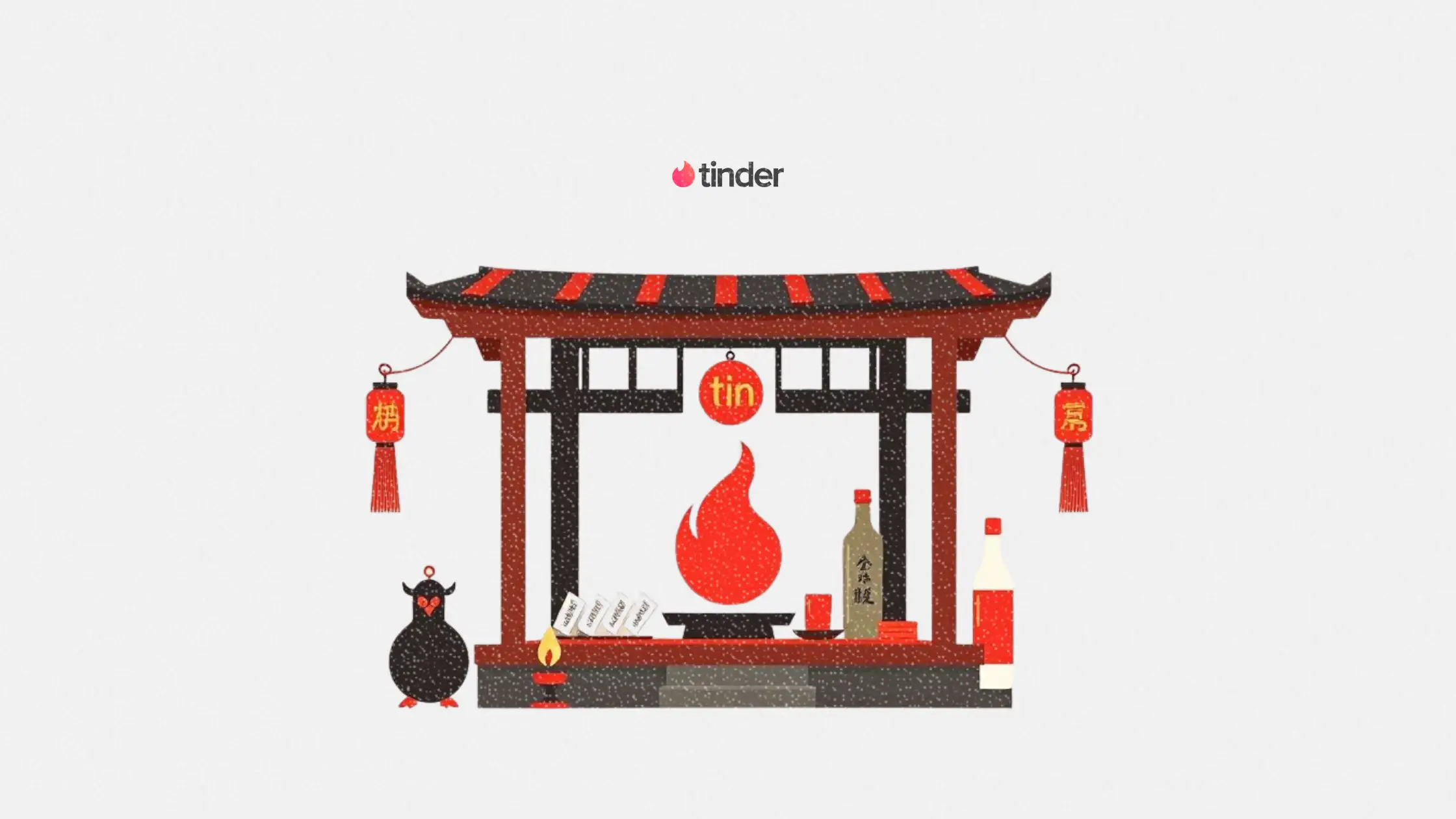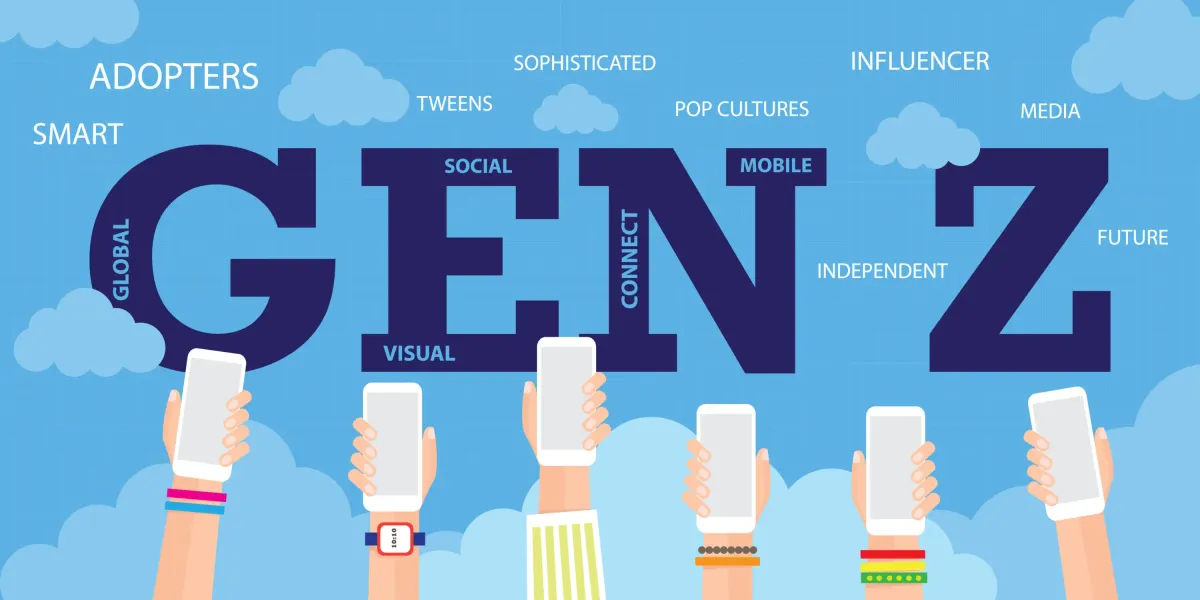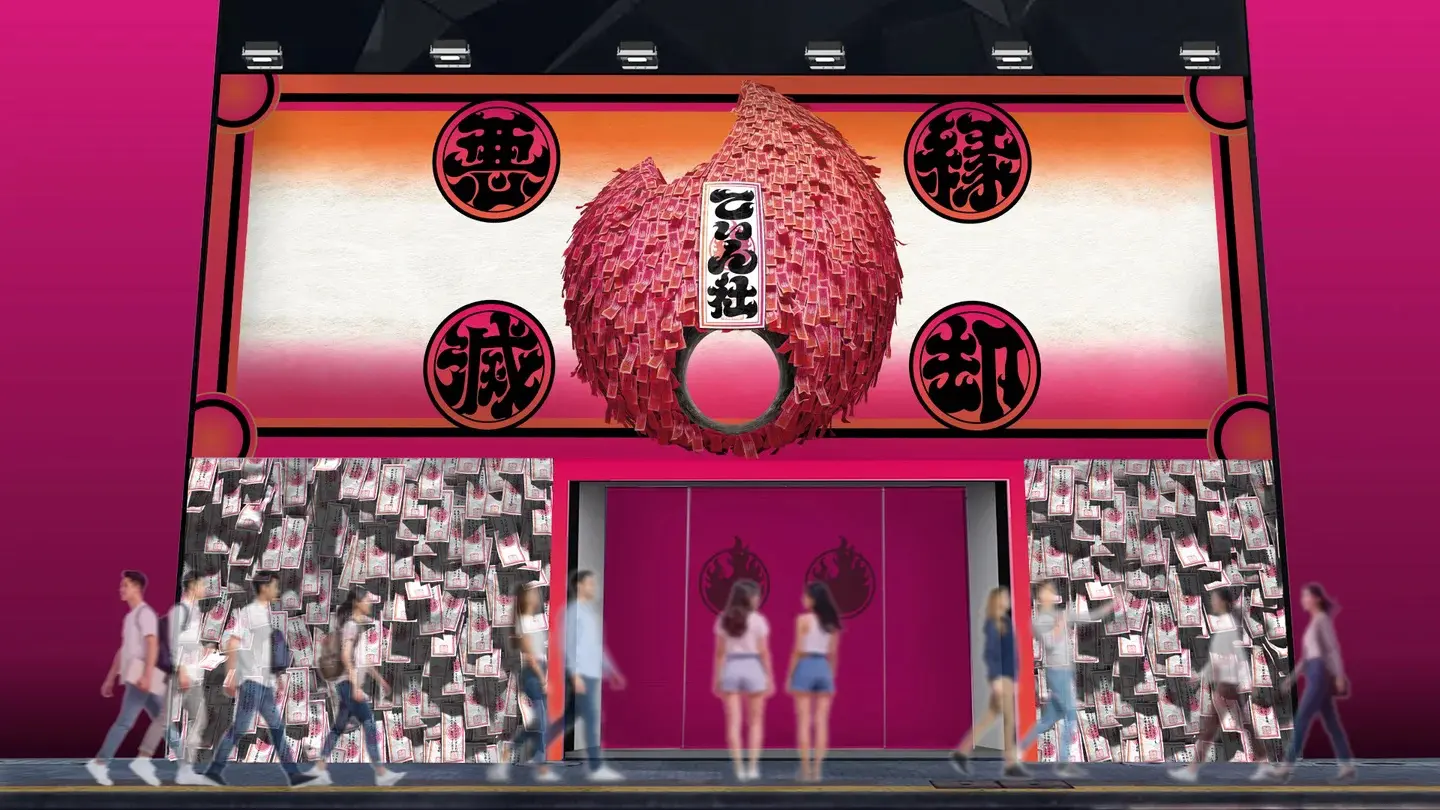Tinder’s shrine-style pop-up lets Gen Z date with emotional clarity
Tinder taps into Japanese rituals to help Gen Z users reflect, reset, and reenter the dating scene

Tinder is leaning deeper into cultural marketing with its latest Japan activation: a symbolic “breakup shrine” that helps users cut ties, romantic or otherwise, and open themselves to new connections.
Inspired by traditional Japanese rituals like enkiri (cutting ties) and otakiage (ceremonial burning), the initiative puts emotional closure at the center of its Gen Z-focused dating wellness campaign.
Running from 12 to 15 September at ZeroBase Shibuya, the four-day pop-up, titled “Tin-Ja”, is more than a quirky photo op. It is a ritualistic space designed for modern reflection, featuring user-submitted stories, symbolic offerings, fortune-telling, and even a heart-shaped drink.
This article explores how Tinder’s Tin-Ja campaign blends culture, emotion, and interactivity to connect with Gen Z on a deeper level, and what this shift toward “dating wellness” signals for marketers trying to stay relevant in a values-driven dating landscape.
Short on time?
Here’s a table of contents for quick access:
- What is Tin-Ja and why Shibuya?
- Breaking ties, the Gen Z way
- Not just about romance: shifting focus to dating wellness
- What marketers should know

What is Tin-Ja and why Shibuya?
The Tin-Ja experience is built around cultural rituals reimagined for today’s digital daters. The central installation, called #Moyasanakya (loosely translated as “gotta burn it”), features real breakup stories submitted via Tinder Japan’s official X account. Visitors can read through heartbreaks, career partings, and friendship fallouts, then symbolically burn them by pasting written ofuda (traditional amulets) in the space.
てぃん社で悪縁にさよなら ❤️🔥 明日13:00オープン!
— Tinder Japan Official (@Tinder_Japan) September 11, 2025
場所:ZeroBase渋谷(東京都渋谷区道玄坂2-5-8)#tinder #てぃん社 pic.twitter.com/l459FG8gw5
Interactive features also include empathy stickers that let people respond to others’ stories, adding a shared sense of closure. To add a ritualistic edge, Tinder has recruited fortune tellers from the Senrigan salon network, including Misuzu Kozaki (nicknamed “Mother of Marunouchi”), who offers spiritual guidance to attendees who download the Tinder app on-site.

Even the refreshments play a role in the experience. The Tin-Ja Ale, a limited-edition heart-shaped bottled drink with crackling granules, offers a playful way to punctuate the emotional release. Tinder is limiting it to 450 servings per day, turning it into a collectible of sorts.
Breaking ties, the Gen Z way
Tinder’s move taps into a broader cultural moment: the blending of IRL experiences with digital emotional hygiene. According to the brand, Tin-Ja isn’t just about romantic breakups, but any lingering connection holding someone back — whether it’s a toxic boss, a fake friend, or a situationship gone stale.
This framing plays especially well with Gen Z, who value emotional transparency and ritualized self-care. The tone of the activation avoids irony or sarcasm. Instead, it aims for therapeutic, user-driven storytelling wrapped in culturally resonant visuals.
It is also a way for Tinder to evolve beyond swipe culture, reminding users that moving on is just as important as matching up. The inclusion of fortune-telling and symbolic burning helps users anchor that reset emotionally, not just functionally.
Not just about romance: shifting focus to dating wellness
The campaign continues Tinder’s pivot toward “dating wellness,” a positioning the brand has used in both product and marketing strategy to reframe dating as part of broader emotional and mental health.
This theme has echoed across Tinder’s recent campaigns in Asia. Back in 2022, the brand rolled out a Valentine’s Day campaign in Bangkok that encouraged singles to pray for love at the Trimurti Shrine, another culturally anchored activation. More recently, its global ‘Crush feelings’ campaign leaned into the chaos of Gen Z emotions, from dopamine overloads to awkward DMs, via surreal video storytelling.
With Tin-Ja, Tinder adds a reflective, slower emotional mode to its Gen Z marketing toolkit — one that aligns with how younger audiences are rethinking what connection actually means.
What marketers should know
Tinder’s Tin-Ja activation offers a playbook for brand campaigns that aim to resonate with Gen Z beyond surface-level engagement. Here’s what stands out:
1. Ritual marketing works, especially when it's personal
Instead of relying on conventional pop-ups or brand booths, Tinder borrowed deep-rooted cultural practices and gave them modern relevance. This invites emotional participation, not just foot traffic.
2. Emotional design isn’t just a UX thing
From amulets to stickers to drinks, every part of Tin-Ja is engineered for symbolic release. Marketers designing experiential campaigns can borrow this emotional utility approach — how does each touchpoint feel, not just function?
3. “Dating wellness” is the new product narrative
Tinder is smartly redefining what it sells: not just matches, but the emotional readiness to date. That opens space for tools, experiences, and campaigns that focus on mindset, not just features. For brands in any relationship-adjacent vertical, this creates fresh ground for strategic storytelling.
4. Japan as a cultural testbed
Tinder continues to use Asia-Pacific as a sandbox for high-concept brand experiments. Marketers targeting international Gen Z audiences should watch these rollouts closely as they often foreshadow global creative trends.




